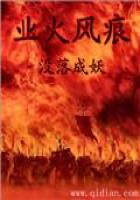1942: In North Africa General Rommel had advanced to within 100 miles of Cairo, but his supply lines had become very long.One of the most important was the railway link through Greece, so the British strategists decided that attempts must be made to disrupt it.The Special Operations Executive (S.O.E.) in London, despatched two small groups of saboteurs (about a dozen men altogether) under the command of Brigadier Eddie Myers and Major Chris Woodhouse who had the task of linking up with the various bands of `Andartes' (Resistance movement fighters) which had started forming in the mountains.
Unfortunately, the British officers were told nothing at all about the bitter rivalries between the various groups, most probably because H.Q.in Cairo were themselves ignorant about the real situation.It didn't take Meyers and Woodhouse long to discover that by far the largest group wasE.L.A.S.(the Popular Liberation Army) under Aris Velouhiotis, about 120 ill-equipped men operating in the Pindus mountains.Another smaller group of about 60 men had rallied round a regular officer of the Greek army, Colonel Napoleon Zervas.They called themselves the National Republican Greek League (Greek initials E.D.E.S.)I met Zervas personally years later when he was Minister of the Interior (and therefore responsible for the Police).I was then acting as interpreter for the Assistant-Head of the British Police Mission to Greece.I remember vividly with what relish he described to Colonel Prosser his method of torturing E.L.A.S.prisoners, which left no physical marks on any part of the body.
It was in the course of a secret visit to Athens that young Chris Woodhouse found out the real chain of command, when he was introduced to George Siantos, the Secretary of the Greek Communist Party (Greek initials K.K.E.).The K.K.E.controlled E.A.M., the National Liberation Front which, in turn, ran E.L.A.S.But with a title like that (National Liberation Front) it was easy to see why E.A.M.enjoyed such widespread support, not only in the countryside, but also among the intelligentsia in Athens.
But the task of the S.O.E.officers was made very difficult for various reasons: Winston Churchill had given orders that they were to support, as far as possible, only those guerrilla leaders who favoured the King - but there were none, or very few.The S.O.E.units had orders to cause the maximum disruption to the German occupation of the country.And that was impossible without the support of E.L.A.S., which was controlled by the Communists.At the outset, it became obvious to the S.O.E.officers that military and political priorities were already in conflict.
E.L.A.S.forces were getting stronger every day and very soon they began attacking fellow Greeks in non-communist Andarte units.The successful attack on the railway bridge over the Gorgopotamos river on the 26th of November was the first and last time that ELAS and EDES co- operated against the common enemy under the coercion and technical guidance of the British.
1943: Friction between EDES and ELAS continued to increase.
When Eddie Myers told them that he had been instructed to destroy the bridge over the Asopos river, ELAS said it was too dangerous a target and refused to help, so this became an all-British operation.A 24-year-old demolition expert of the Royal Engineers Captain Ken Scott, was sent from Cairo.He was dropped by parachute, and planned the successful attack on the bridge.It took the Germans four months to rebuild it.
On the 11th of September 14,000 Italian troops in the north-west surrendered to the Andartes with all their arms.A month later ELAS seized the weapons and attacked EDES.The civil war had begun.
1944: The friction between the various groups of the Resistance movement erupted into full-scale war, described as the 'civil war' or the 'guerrilla war' depending on whose side you were on.ELAS were determined that they alone would be in control when the Allies arrived.As a result of intense negotiations on the part of the British officers, all the Andarte leaders signed an Armistice document on the 29th February 1944 agreeing to stop fighting each other and to concentrate all their efforts against the common enemy - the Germans.Unfortunately, barely a month later ELAS attacked and completely annihilated the smallest andarte groupE.K.K.A.Now only EDES and the 200-strong S.O.E.force stood between the 40,000 ELAS Communists and total control of the Greek countryside.
In the Middle East, the Lebanon Conference, attended by delegates from all parties, including representatives of the Andartes, elected George Papandreou (father of Andreas Papandreou, recently Prime Minister of Greece), to act as Prime Minister of the Government of National Unity in exile.In September the government moved temporarily to Italy.In October, following the withdrawal of the Germans from Athens, British troops began landing in Greece from Greek and British warships.By far the largest contingent landed near the port of Piraeus and tens of thousands of Greeks turned out to cheer and welcome the British forces as they marched through the streets.
On October 18 the members of the Greek government returned to Athens under the leadership of the Premier George Papandreou, who was accompanied by Lt.General Ronald Scobie, the Allied military commander.
Sadly though, in December ELAS marched on Athens.The British troops, so recently feted and garlanded now found themselves fighting on the same streets of their earlier welcome.S.O.E.had been warning Cairo for two years that this might happen.After three or four weeks of intense fighting in the streets of Athens and in the suburbs, ELAS withdrew.















